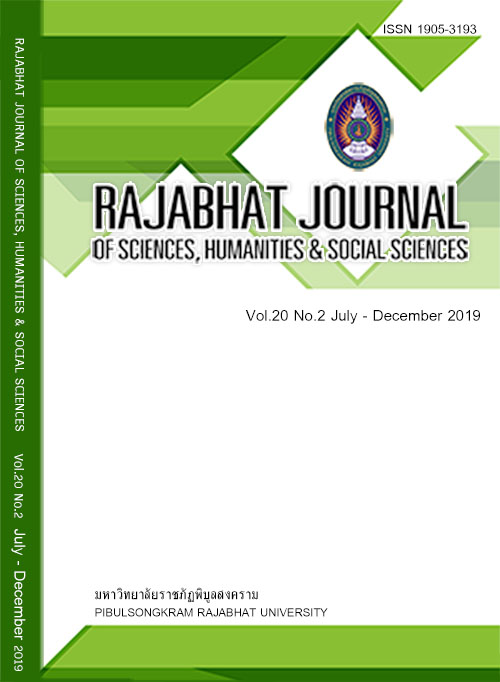SEXUAL DIMORPHISM AND SEX RATIO OF SPRINGTAIL XENYLLA SP.
Keywords:
sexual dimorphism, sex ratio, springtailAbstract
Generally, size and shape of the body of animals were used to determine sexes. Under laboratory conditions at 25 – 28 0C, rearing springtail in the plastic bottle containing plaster of Paris-charcoal substrate was established to investigate the sexual dimorphism which was in agreement with hypothesis. It was found that the both sexes of Xenylla sp. were separated by the body size and female body size was longer and bigger than male. In addition, the pattern of pigmentation on the body and color body were as the main characteristics to separate sexes in Xenylla sp. Female was bright yellow whereas male of the same age had darker body due to distribution of pigments. For sex ratio, it was found that an apparent predominace of males over female in the ratio of 1.63: 1, respectively. Based on this study, it indicated that Xenylla sp. was dioecious and non parthenogenitic species and possible to use the combination of body size and color to determine the sexes.
References
Chahartaghi M. Scheu S, Ruess L. Sex ratio and mode of reproduction in collembolan of an oak-beech forest. Pedobiologia. 2006; 50: 331-340.
Chahartaghi M. Maraun M. Scheu S, et al. Resource depletion and colonization: a comparison between parthenogenetic and sexual collembolan species. Pedobiologia. 2009; 52: 181-189.
Chernova NM. Patapov MB, & Savenkova YY. Ecological significance of parthenogenesis in collembolan. Entomological Review. 2010; 90(1): 23-38.
Elzinga RJ. Fundamental of Entomology. Upper saddle river: Prentice Hall; 2000.
Emlen DJ. Hunt J. & Simmons, LW. Evolution of sexual dimorphism and male dimorphism in the expression of beetle horn: phylogenetic evidence for modularity, evolutionary lability and constraint. The American Naturalist. 2005; 166: S42-S68.
Goto HE. Facultative parthenogenesis in Collembola. Nature. 1960; 188: 958-959.
Hopkin SP. Biology of the Springtails (Insecta: Collembola). New York: Oxford University Press; 1997.
Humason GL. Animal tissue Techniques. San Francisco: Freeman; 1979.
Mari-Mutt JA. Redescription of Willowsia jacobsoni (Börner), an entomobryid with conspicuous sexual dimorphism (Insecta: Collembola). The Journal of Agriculture of the University of Puerto Rico. 1981; 65: 361-373.
Palacios-Vargas JG. A new species of Denisiella (Collembola: Sminthuridae) from Panama and new records for D. sexpinnata (Denis, 1983). Zootaxa. 2007; 1637: 63-68.
Palacios-Vargas JG, & Castaño-Meneses G. Importance and evolution of sexual dimorphism in different families of Collembola (Hexapoda). Pesquisa Agropecuária Brasileira. 2009; 44(8): 959-963.
Petersen H. Sex-ratios and the extent of parthenogenetic reproduction in some collembolan populations. In: R Dallai (Ed.), First International Seminary on Apterygota. Siena: Accademia delle Scienze di Siena detta de’ Fisiocritici. 1978: 19-35.
Ramel G. Baquero E, Jordana R. Biodiversity of the Collembola fauna of wetland Kerkini (N. Greece), with description of the sexual dimorphism of Entomobrya atrocincta Schött 1896 (Collembola: Entomobryomorpha). Annales de la Société Entomologique de France. 2008; 44: 113-128.
Sharma GD, Metz LJ. Biology of the Collembola Xenylla grisea Axelson and Lepidocyrtus cyaneus f. cinereus Folsom. Ecological Entomology. 1976; 1: 209-212.
Skarzynski D. Parthenogenesis in Ceratophysella succinea Gisin, 1949 (Collembola: Hypogastruridae). Polish Journal of Entomology. 2002; 71: 323-326.
Vollrath F. Parker, GA. Sexual dimorphism and distorted sex ratios in spiders. Nature. 1992; 360: 156-159.
Youdeowei A. A laboratory manual of entomology. New York: Oxford University Press; 1977.
Downloads
Published
How to Cite
Issue
Section
License
Each article is copyrighted © by its author(s) and is published under license from the author(s).










